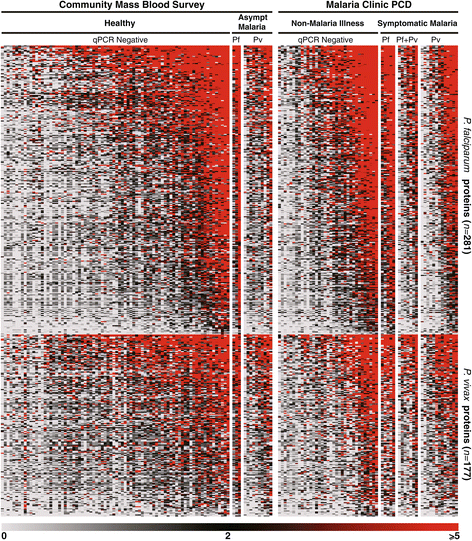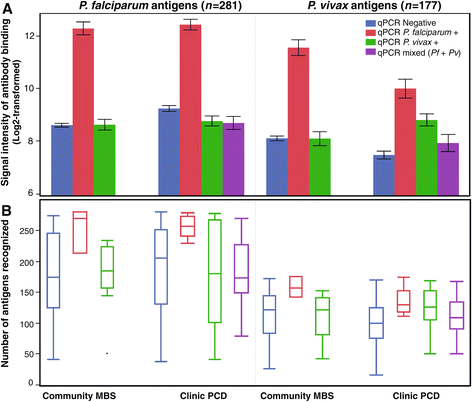Submicroscopic and asymptomatic Plasmodium falciparum and Plasmodium vivax infections are common in western Thailand - molecular and serological evidence
- PMID: 25849211
- PMCID: PMC4342942
- DOI: 10.1186/s12936-015-0611-9
Submicroscopic and asymptomatic Plasmodium falciparum and Plasmodium vivax infections are common in western Thailand - molecular and serological evidence
Abstract
Background: Malaria is a public health problem in parts of Thailand, where Plasmodium falciparum and Plasmodium vivax are the main causes of infection. In the northwestern border province of Tak parasite prevalence is now estimated to be less than 1% by microscopy. Nonetheless, microscopy is insensitive at low-level parasitaemia. The objective of this study was to assess the current epidemiology of falciparum and vivax malaria in Tak using molecular methods to detect exposure to and infection with parasites; in particular, the prevalence of asymptomatic infections and infections with submicroscopic parasite levels.
Methods: Three-hundred microlitres of whole blood from finger-prick were collected into capillary tubes from residents of a sentinel village and from patients at a malaria clinic. Pelleted cellular fractions were screened by quantitative PCR to determine parasite prevalence, while plasma was probed on a protein microarray displaying hundreds of P. falciparum and P. vivax proteins to obtain antibody response profiles in those individuals.
Results: Of 219 samples from the village, qPCR detected 25 (11.4%) Plasmodium sp. infections, of which 92% were asymptomatic and 100% were submicroscopic. Of 61 samples from the clinic patients, 27 (44.3%) were positive by qPCR, of which 25.9% had submicroscopic parasite levels. Cryptic mixed infections, misdiagnosed as single-species infections by microscopy, were found in 7 (25.9%) malaria patients. All sample donors, parasitaemic and non-parasitaemic alike, had serological evidence of parasite exposure, with 100% seropositivity to at least 54 antigens. Antigens significantly associated with asymptomatic infections were P. falciparum MSP2, DnaJ protein, putative E1E2 ATPase, and three others.
Conclusion: These findings suggest that parasite prevalence is higher than currently estimated by local authorities based on the standard light microscopy. As transmission levels drop in Thailand, it may be necessary to employ higher throughput and sensitivity methods for parasite detection in the phase of malaria elimination.
Figures


References
Publication types
MeSH terms
Substances
Grants and funding
LinkOut - more resources
Full Text Sources
Other Literature Sources
Medical
Molecular Biology Databases
Research Materials
Miscellaneous

